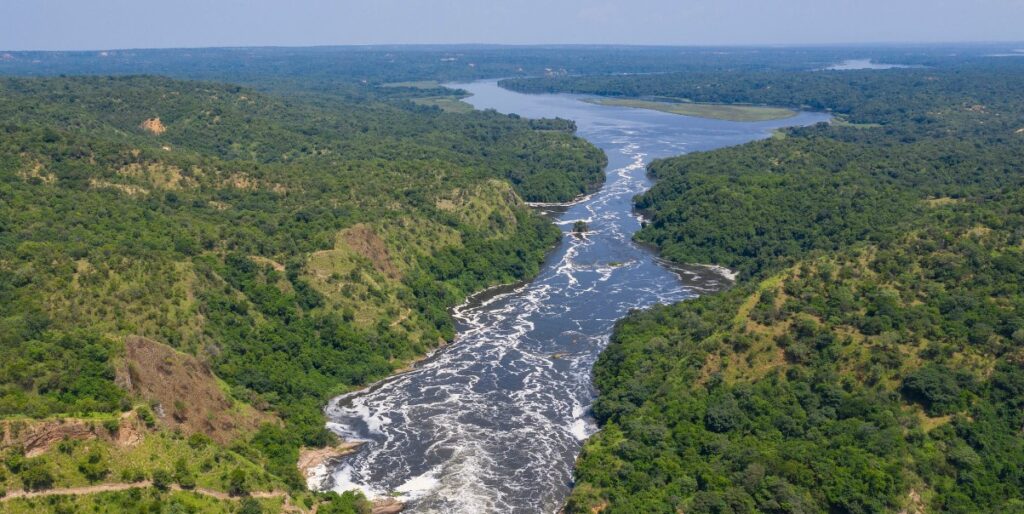Longest river in the world, among the 150,000 rivers globally, these are the longest and most magnificent that one may encounter or learn about.
Rivers are among the planet’s most magnificent wonders, traversing the Earth and offering essential habitats for many species. There are around 150,000 identified rivers worldwide, with perhaps several additional rivers yet to be discovered. Have you ever contemplated which rivers are the largest and most remarkable? From the immense Nile River and the remarkable Amazon to the powerful Congo, these are the six greatest and most essential rivers that sustain our planet’s vitality.

1. The Nile River (6,650 km)
The Nile River is currently acknowledged by the Guinness World Records as the longest river in the world . It measures roughly 4.32 miles, or 6.650 kilometers in length. The Nile traverses multiple countries before discharging into the Mediterranean Sea. The Nile traverses or borders several African nations, including Uganda, Ethiopia, Kenya, Tanzania, Egypt, Sudan, and South Sudan. Tributaries that contribute to the river include the Blue Nile, the White Nile, and the Atbara. Due to its considerable length, the Nile serves as a significant water source, especially for agriculture and irrigation. It also hosts a diverse array of animals, including hippopotamuses, Central African rock pythons, and Nile crocodiles.
2. The Amazon River (6,400 km)
The Amazon River, at 6,400 kilometers, is nearly equivalent in length to the Nile River. Nevertheless, the Amazon River possesses the greatest volume of freshwater globally, discharging a minimum of 200,000 liters into the ocean every second. The Amazon River originates in the Andes Mountains of Peru and flows eastward over the periphery of South America, ultimately emptying into the Atlantic Ocean. The Amazon River, due to its substantial water volume, influences the Caribbean sea level, resulting in a 3cm rise when its water flows into the Caribbean islands.
The extensive jungle is home to a diverse array of animals, including the capybara, black caiman, Amazon River manatee, huge otter, piranhas, and notably, the pink river dolphin. The Amazon supports around 2,000 distinct bird species, rendering it one of the planet’s most essential life-sustaining ecosystems.
3. Yangtze River (6,300 km)
The Yangtze River in China ranks as the third-longest river in the world, measuring 6,300 kilometers in length. It traverses a significant portion of Asia, establishing an unofficial boundary between North and South China, so rendering it the longest river in Asia. Approximately one third of China’s total population resides in the Yangtze River basin. The Yangtze originates in the mountains of Qinghai province on the Tibetan plateau and traverses a considerable distance to the East China Sea. Over 350 fish species inhabit the river, accompanied by 280 animal species, 166 reptile types, and 762 bird sorts, establishing it as one of the most remarkable wildlife sanctuaries globally.
4. The Mississippi-Missouri River (6270 km)
The Mississippi-Missouri River is more accurately characterized as a river system rather than a singular river, as it comprises the confluence of the Missouri and Mississippi rivers, which are frequently regarded as a single significant river. This extensive river measures an astonishing 6,270 kilometers, rendering it the longest body of water in the United States. This huge body of water supports a diverse range of wildlife, including alligators, turtles, migratory birds, and fish, notably in the Mississippi Delta, which has valuable ecosystems.
5. The Yenisei River (5,500 km)
The Yenisei River originates in northern Mongolia, traverses Central Siberia, and flows into the Kara Sea, which connects to the Arctic Ocean. This watercourse comprises multiple rivers across Russia and Mongolia, together measuring at least 5,500 kilometers. The river serves as an essential resource for a significant portion of Russia’s populace, facilitating cattle ranching, agriculture, fishing, and other activities. The river serves as a significant transportation infrastructure and has multiple hydroelectric power facilities that produce substantial energy.
